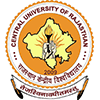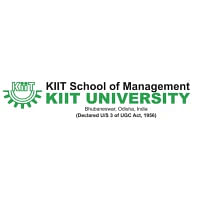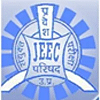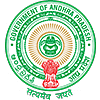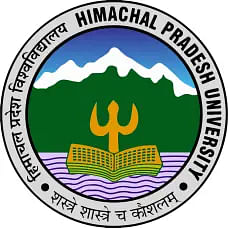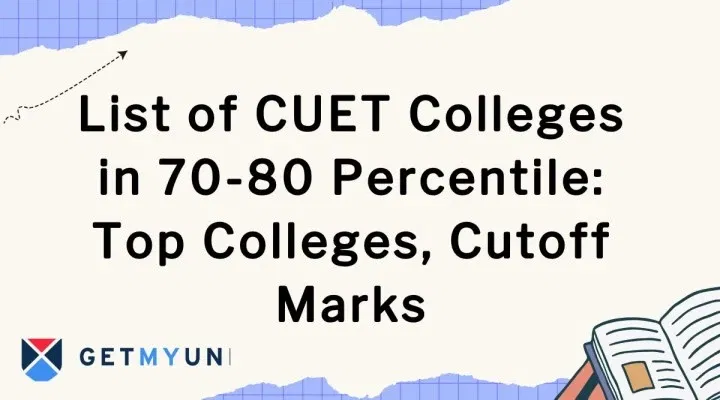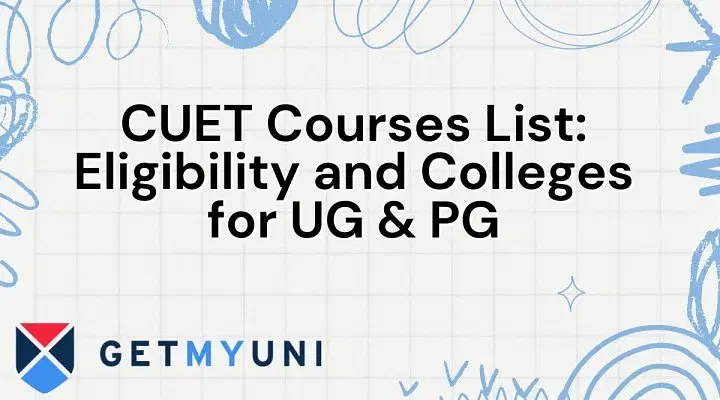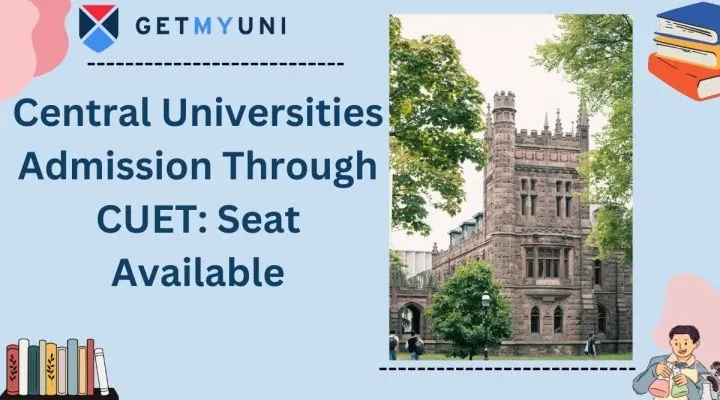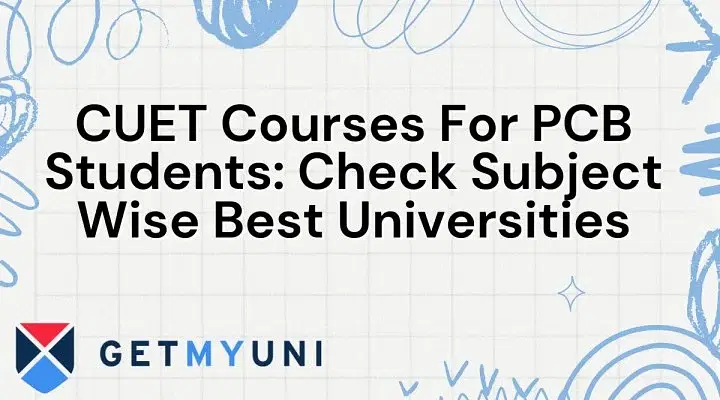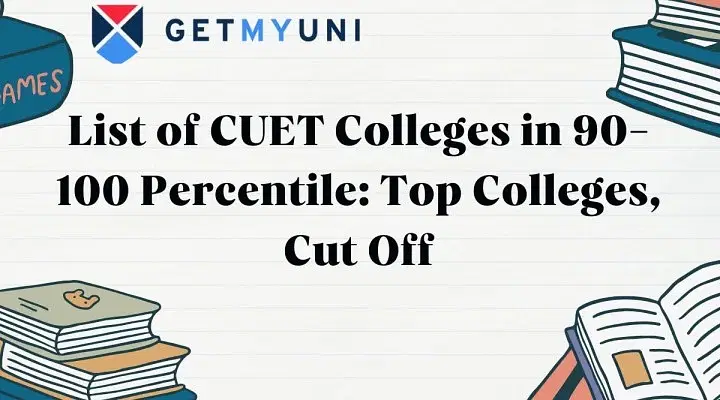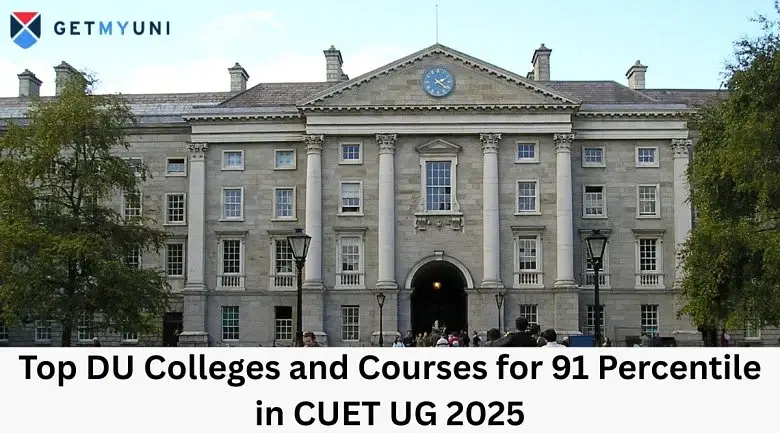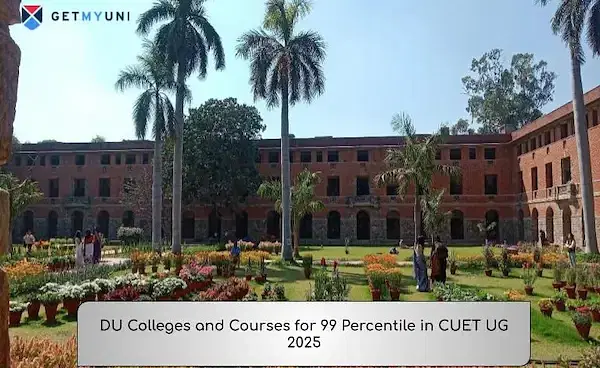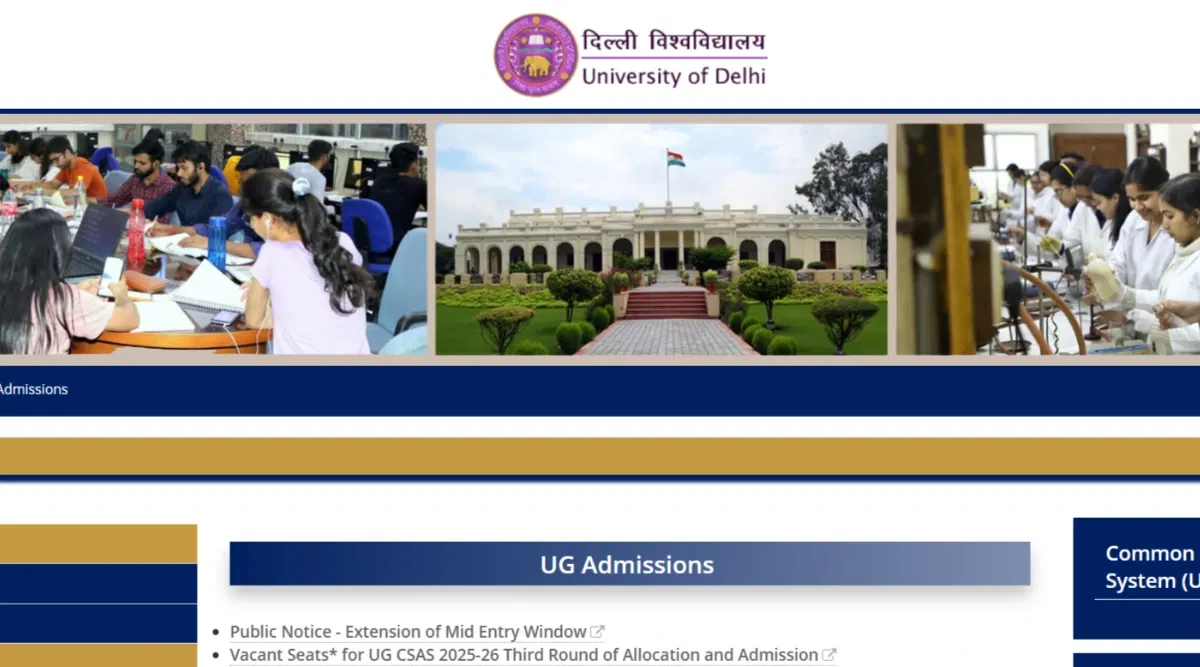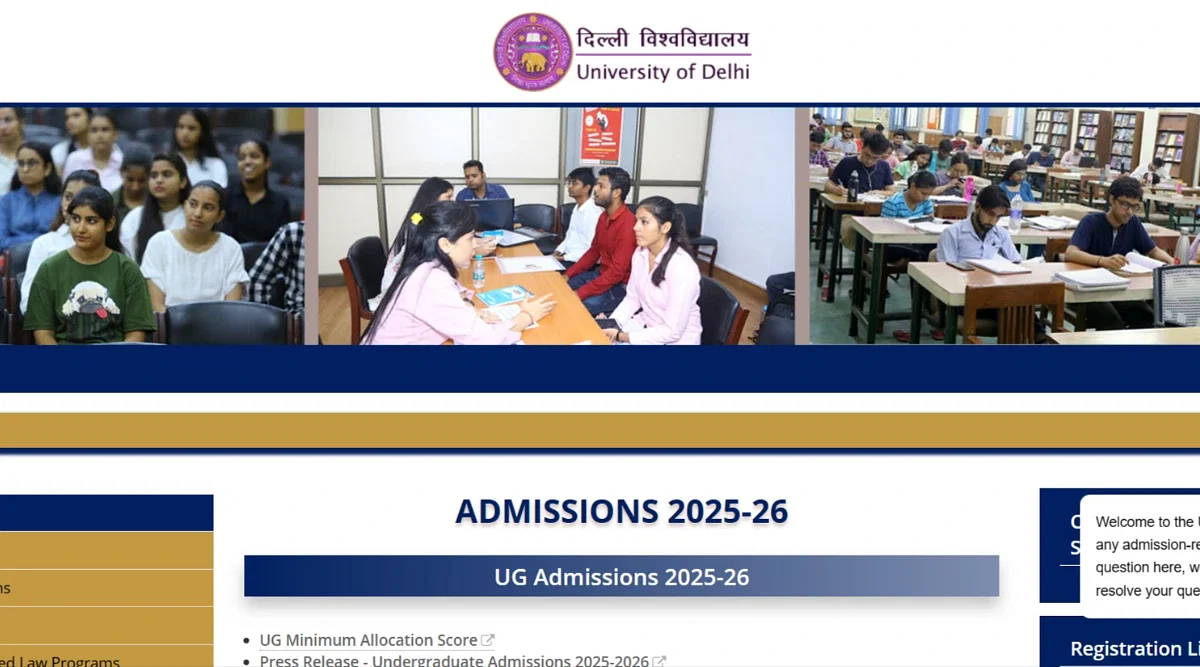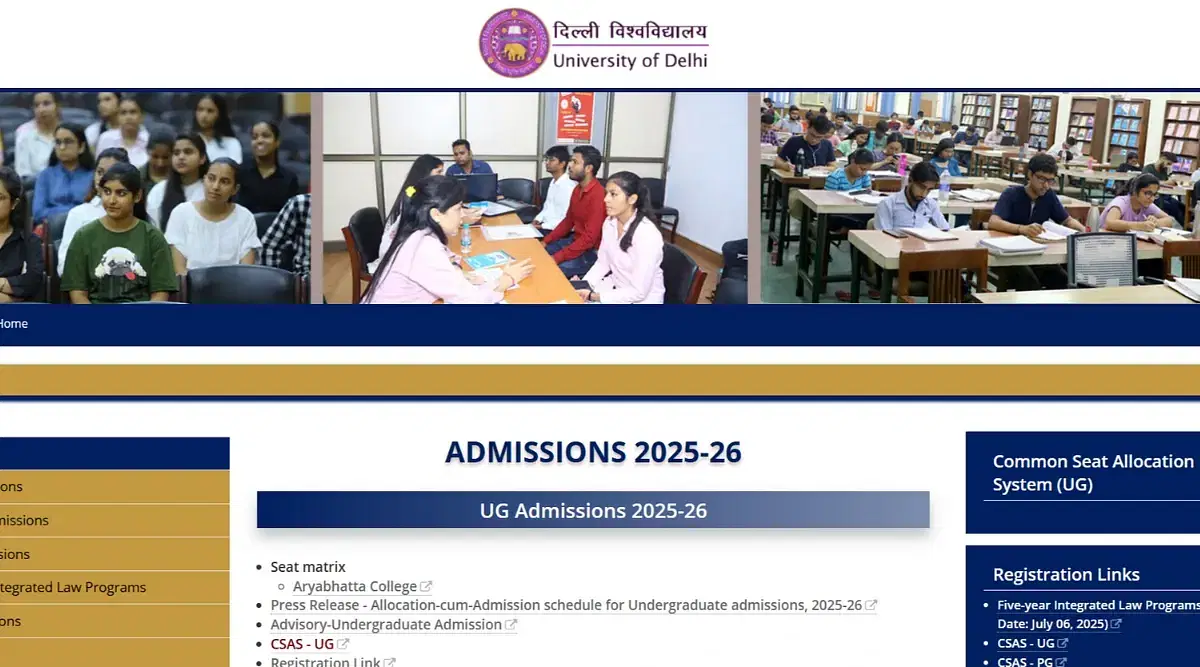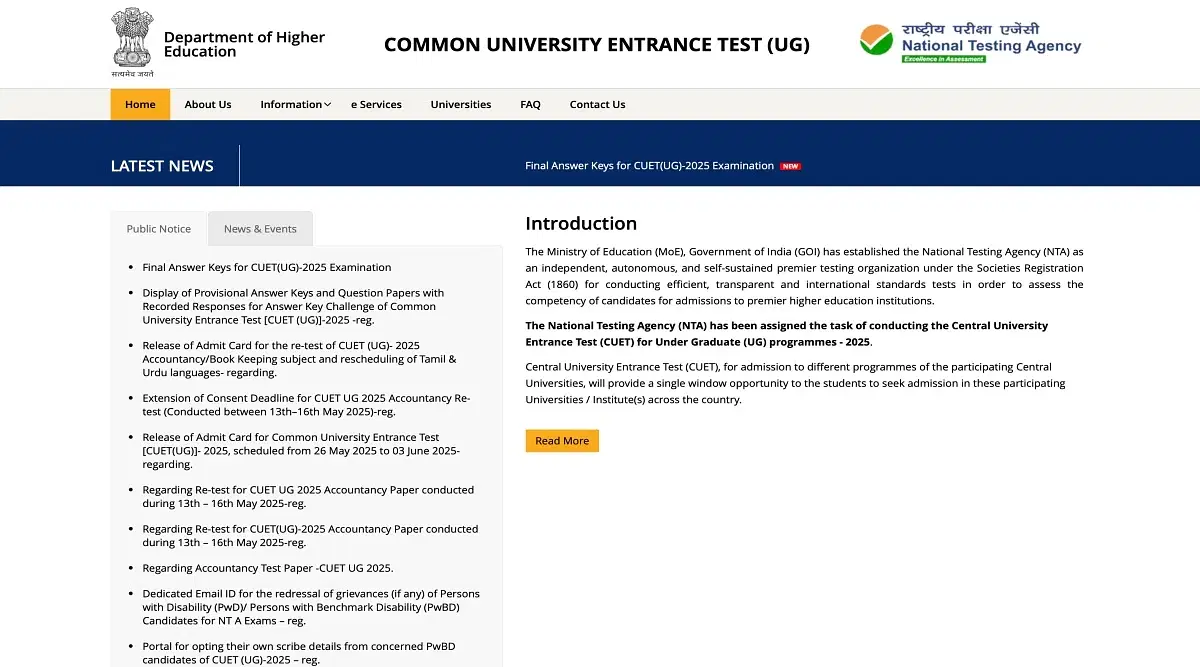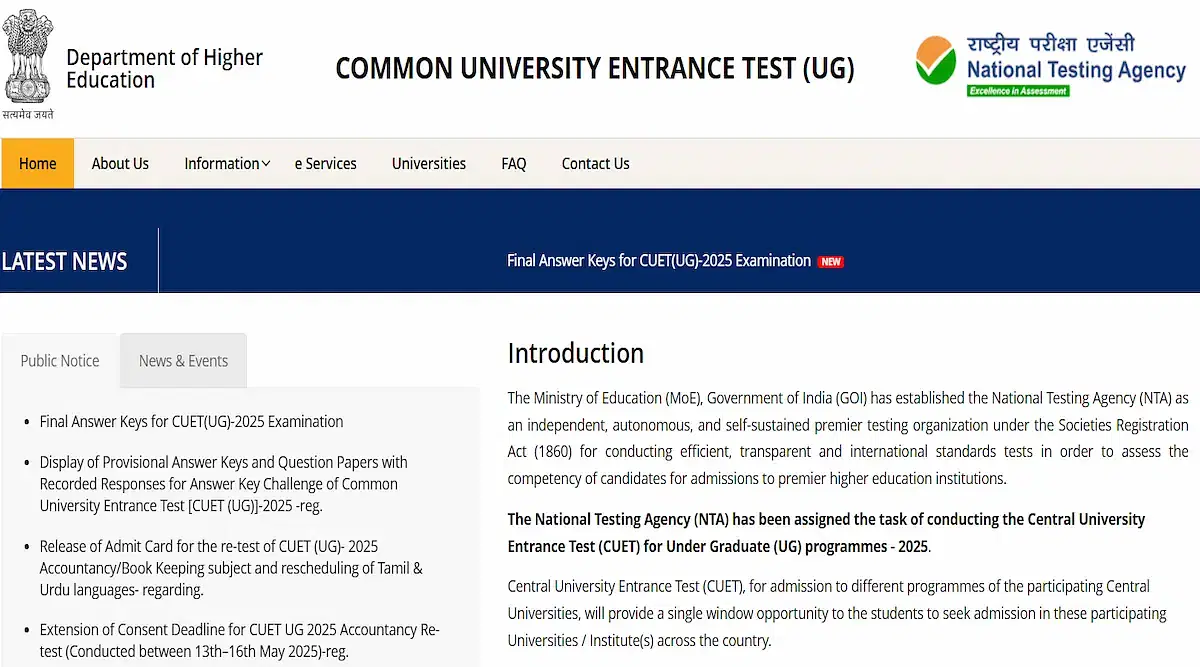
Table of Contents
CUET syllabus 2025 has been released by the NTA authorities on the official website, i.e., cuet.nta.nic.in. As per the latest notice released by the NTA on May 19, 2025, the Accountancy syllabus and paper pattern have been revised. The students will be given an option to choose between 'Unit V' and 'Option Unit V', this change will be effective from May 22, 2025, onwards exams. Along with that, 1 topic from the Physics paper and 7 topics from the Chemistry paper have been deleted by the National Testing Agency (NTA).
The CUET Syllabus 2025 consists of 4 sections in the CUET 2025 exam: Section IA, IB, II, and III. CUET syllabus 2025 consists of some important topics such as Laws of Motion, Measurement, Chemical Bonding, Algebra, Trigonometry, Plant Cell, and many more. Moreover, aspirants must note that the NTA has added two new papers under CUET for the academic year 2025. NTA has added Fashion Studies and Tourism as two new subjects under the syllabus of CUET UG 2025.
Section I will consist of the Language test, Section II will consist of the Domain test, and Section III will have a General Test. Candidates are advised to check out the CUET eligibility criteria 2025 to get an idea regarding the eligibility for the exam. The syllabus for CUET 2025 courses is based on classes XI and XII majorly, while the syllabus for PG courses covers topics from the graduation level. The candidates must practice common topics such as English Proficiency, Logical Reasoning, Analytical Skills, Data Interpretation, General Knowledge, etc.
CUET Syllabus for UG Courses
For the undergraduate course paper, the candidate will get four sections in the paper. Section I (Physics) and Section II (Chemistry) are compulsory, whereas candidates need to select any one option from Section III (Mathematics) and Section IV (Biology). However, students must note that total 8 topics (1 from Physics and 7 from Chemistry) has been removed by NTA.
In case the candidate attempts both Sections III and IV, the best of the three sections, i.e., Section I, Section II, and either Section III or IV, will be evaluated. The CUCET entrance exam syllabus of science or CUET UG syllabus is shared below for the candidates.
Moreover, the official PDF download link of the CUCET UG syllabus 2025 is shared below.
| Particulars | Direct Link |
| New Changes in the Accountancy Paper Pattern | Click Here |
| Direct Link to Download CUET UG Syllabus 2025 | Click Here |
CUCET Physics Syllabus
The CUCET exam syllabus of Physics consists of topics based on concepts of matter, motion, and energy. However, the communication systems topic has been removed from the syllabus. The syllabus for CUCET Physics has been mentioned below:
- Measurement: Dimensional analysis and error estimation.Dimensional compatibility and significant figures
- Motion in One Dimension: Average velocity, instantaneous velocity, one-dimensional motion with constant accelerations, freely falling bodies.
- Laws of Motion: Force and inertia, Newton's laws of motion, and their significance.
- Motion in Two Dimensions: Projectile motion, uniform circular motion, tangential and radial acceleration in curve-linear motion, relative motion and relative acceleration.
- Work, Power, and Energy: Work was done by constant and variable forces, kinetic and potential energy, power, Conservative and non-conservative forces, conservation of energy, gravitational energy, work-energy theorem, and the potential energy stored in the spring.
- Linear Momentum and Collisions: Linear momentum & impulse, conservation of linear momentum for the two-particle system, collisions, collision in one dimension, collision in two dimensions, rocket propulsion.
- Rotation of a Rigid Body About a Fixed Axis: Angular velocity and angular acceleration, rotational kinematics, rotational motion with constant angular acceleration relationship between angular and linear quantities, rotational energy, a moment of inertia for a ring, rod, spherical shell, sphere and plane lamina, torque and angular acceleration, work, and energy in rotational motion, rolling motion of a solid sphere and cylinder.
- Gravitation: Gravitational Field, Kepler's laws and motion of planets, planetary and satellite motion, and geostationary satellite.
- Oscillatory Motion: Harmonic motion, oscillatory motion of the mass attached to a spring, kinetic & potential energy, period of a simple pendulum, comparing the simple and harmonic motion with a uniform circular motion, forced oscillations, damped oscillations, and resonance.
- Mechanics of Solids and Fluids: States of matter young's modulus.Bulk modulus, The shear modulus of rigidity.Variations of pressure with depth, Buoyant Forces and Archimedes principle, Pascal's law, Bernoulli's theorem, and its application, surface energy, surface tension, the angle of contact, capillary rise, the coefficient of viscosity, viscous force, Terminal velocity, Stoke's law, streamline motion, Reynold's numbers.
- Heat and Thermodynamics: The first law of thermodynamics, the specific heat of an ideal gas at constant volume and constant pressure, the relation between them, Thermodynamics process (reversible, irreversible, isothermal, adiabatic), the second law of thermodynamics, concept of entropy, and concept of absolute scale, The efficiency of a Carnot engine, thermal conductivity, Newton's law of cooling, black body radiation, Wien's displacement law, and Stefan's law.
- Wave: Wave motion, phase, amplitude, and velocity of the wave, Newton's formula for longitudinal waves, propagation of sound waves in air, Effect of temperature and pressure on the velocity of sound, Laplace's correction, Principle of superposition, the formation of standing waves, standing waves in strings and pipes, beats, Doppler's effect.
- Electrostatics: Coulomb's law, electric field and potential due to a point charge, dipole and its field along an axis and perpendicular to an axis, electric flux, Gauss's theorem and its applications to find a field due to an infinite sheet of charge, and inside the hollow conducting sphere, Capacitance, parallel plate capacitor with air and dielectric medium between Plates, Series and parallel combination of capacitors, the energy of a capacitor, displacement currents.
- Current Electricity: Concept of free and bound electrons drift velocity and mobility, electric current, Ohm's law, Resistivity, conductivity, temperature dependency of resistance, resistance in series, and a parallel combination, Kirchoff’s law and its application to a network of resistances, the principle of a potentiometer, the effect of temperature on resistance, and its application.
- Magnetic Effect of Current: Magnetic field due to current, Biot-Savart 's law, magnetic field due to a solenoid, The motion of charge in a magnetic field, the force on current-carrying conductors and torque on the current loop in a magnetic field, Magnetic flux, forces between two parallel current-carrying conductors, Moving coil galvanometer and its conversion into an ammeter and voltmeter.
- Magnetism in Matter: Magnetization of substance due to orbital and spin motions of electrons, Magnetic moment of atoms, diamagnetism, paramagnetism, ferromagnetism, Earth's magnetic field and its components and their measurement.
- Electromagnetic Induction: Induced emf, Faraday's laws, Lenz's law, electromagnetic induction, Self and mutual induction, B-H curve, hysteresis loss and its importance, eddy currents.
- Ray Optics and Optical Instruments: Sources of light, luminous intensity, luminous flux, illuminance, photometry, wave nature of light, Huygen's theory for the propagation of light and rectilinear propagation of light, a reflection of light, total internal reflection, Reflection and refraction at spherical surfaces, the focal length of a combination of lenses, spherical and chromatic aberration, and their removal, Refraction and dispersion of light due to a prism, simple and compound microscope, reflecting and refracting telescope, magnifying power, and resolving power.
- Wave Optics: Coherent and incoherent sources of light, interference, Young 's double-slit experiment diffraction due to a single slit, linearly polarized light, Polaroid.
- Modern Physics: Photo-electric equation, matter waves, quantization, Planck's hypothesis, Bohr's model of the hydrogen atom and its spectra, Ionization potential, Rydberg constant, solar spectrum, and Fraunhofer lines, Fluorescence and phosphorescence, X-Rays and their productions, characteristic and continuous spectra.Nuclear Instability, radioactive decay laws, Emission of α, β, γ rays, Mass - defect, Mass-Energy equivalence.Nuclear Fission Nuclear Reactors, Nuclear Fusion, Classification of Conductors, Insulators, and semiconductors based on energy bands in solids, PN junction, PN Diode, Junction Transistors, Transistor as an Amplifier and Oscillator, Principles of Logic Gates ( AND, OR, and NOT ) Analog Vs Digital communication, Difference between Radio and television, Signal propagation, Principle of LASER and MASER, Population Inversion, and Spontaneous and Stimulated Emission.
CUET Syllabus for Chemistry
The CUET syllabus 2025 for Chemistry consists of the study of chemical substances. The CUCET Chemistry syllabus for the year 2025 is given below. Stduents must note that total 7 topics has been removed.
- Atomic Structure: Bohr's concept, Quantum numbers, Electronic configuration, Molecular orbital theory for homonuclear molecules, Pauli's exclusion principle.
- Chemical Bonding: Electrovalency, co-valency, hybridization involving s,p, and d orbitals hydrogen bonding.
- Redox Reactions: Oxidation number, oxidizing and reducing agents, balancing of equations.
- Chemical Equilibrium and Kinetics: Equilibrium constant (for a gaseous system only) Le Chaterlier 's principle, ionic equilibrium, Ostwald's dilution law, hydrolysis, pH and buffer solution, solubility product, common ion effect, rate constant, and first-order reaction.
- Acid-Base Concepts: Bronsted Lowry & Lewis.
- Electrochemistry: Electrode potential and electrochemical series.
- Catalysis: Types and applications.
- Colloids: Types and preparation, Brownian movement, Tyndall effect, coagulation, and peptization.
- Colligative Properties of Solution: Lowering of vapor pressure, Osmotic pressure, depression of freezing point, the elevation of boiling point, and determination of molecular weight.
- Periodic Table: Classification of elements on the basis of electronic configuration, properties of s,p, and d block elements, ionization potential, electronegativity & electron affinity.
- Preparation and Properties of the following: Hydrogen peroxide. copper sulfate, silver nitrate, plaster of Paris, borax, Mohr's salt, alums, white and red lead, microcosmic salt and bleaching powder, sodium thiosulphate.
- Thermochemistry: Exothermic & endothermic reactions Heat of reaction, Heat of combustion & formation, neutralization, Hess's law.
- General Organic Chemistry: Shape of organic compounds, Inductive effect, mesomeric effect, electrophiles & nucleophiles.
- Reaction intermediates: Carbonation, carbanions & free radicals, Types of organic reactions, Cannizzaro Friedel Craft, Perkin, Aldol condensation.
- Isomerism: Structural, Geometrical & Optical IUPAC: Nomenclature of simple organic compounds.
- Polymers: Addition & condensation polymers.
- Carbohydrates: Monosaccharides.
- Preparation and Properties of the Followings: Hydrocarbons, monohydric alcohols, aldehydes, ketones, monocarboxylic acids, primary amines, benzene, nitrobenzene, aniline, phenol, benzaldehyde, benzoic acid, Grignard Reagent.
- Petroleum: Important industrial fractions, cracking, octane number, anti-knocking compounds.
CUET Syllabus for Maths
CUET maths syllabus 2025 consists of calculations and problem-solving on given numerical. The CUCET syllabus 2025 for Mathematics is shared below.
- Algebra: Sets relations & functions, De-Morgan 's Law, Mapping Inverse relations, Equivalence relations, Peano's axioms, Definition of rationals and integers through equivalence relation, Indices and surds, Solutions of simultaneous and quadratic equations, A.P., G.P. and H.P., Special sums i.e. ∑n2 and ∑n3 (n∑N ), Partial fraction, Binomial theorem for any index, exponential series, Logarithm, and Logarithmic series. Determinants and their use in solving simultaneous linear equations, Matrices, Algebra of matrices, Inverse of a matrix, and Use of a matrix for solving equations.
- Probability: Definition, Dependent, and independent events, Numerical problem on addition and multiplication, Theorem of probability.
- Trigonometry: Identities, Trigonometric equations, properties of triangles, solution of triangles, heights and distances, Inverse function, Complex numbers and their properties, Cube roots of unity, De-Moivre 's theorem.
- Coordinate Geometry: Pair of straight lines, Circles, General equation of second degree, parabola, ellipse, and hyperbola, tracing of conic.
- Calculus: Limits and continuity of functions, Differentiation of function, tangents & normal, Simple examples of Maxima and minima, Indeterminate forms, Integration of function by parts, by substitution and by partial fraction, definite integral, application to volumes and surfaces of frustums of a sphere, cone, and cylinder. Differential equations of the first order and a first degree.
- Vectors: Algebra of vectors, scalar, and vector products of two and three vectors and their applications.
- Dynamics: Velocity,- composition of velocity, relative velocity, acceleration, the composition of accelerations, Motion under gravity, Projectiles, Laws of motion, Principles of conservation of momentum and energy, a direct impact of smooth bodies.
- Statics: Composition of coplanar, concurrent and parallel forces, moments and couples resultant of a set of coplanar forces and condition of equilibrium, determination of centroid in simple cases, Problems involving friction.
CUCET Syllabus for Biology
CUET biology syllabus for the year 2025 consists of the study of life, evolution, human genetics, eugenics, and so on. The syllabus of CUCET for Biology is detailed below.
- Origin of Life: Oparin 's theory, Miller's Experiment, Viruses - structure, properties, distribution, classification, and pathogenesis (Eg. Aids, Cancer), Viroids & Prions, Biotic balance.
- Organic Evolution: Relationship among organisms and Evidence of Organic Evolution - Principles of Evolution - Lamarckism, Darwinism, and Speciation.
- Mechanism of Organic Evolution: Variations - Definition, causes and types, Mutations (Principles of Hugo DeVries), Role of mutations in speciation. Evolution through ages and human evolution.
- Human Genetics and Eugenics: Human hereditary traits, the study of Twins, A.B.O. blood groups and their inheritance, Rh-factor, Sex determination. Chromosomal aberrations, Important human syndromes, Sex-linked characters and their inheritance, Applied Genetics - eugenics, euthenics, euphenics & I.Q. Test.
- Applied Biology: Wildlife of India - Endangered species: Biosphere Reserves, National Parks and sanctuaries, Project Tiger, Conservation of wildlife, Bio-energy, Poultry, Fisheries (edible fishes), Human Population, Population explosion, problems & control. Test - Tube Babies, & Amniocentesis, Application of Biotechnology in Human Welfare. Human Aging.
- Mammalian Anatomy (Eg. Rabbit): Reproductive system (excluding embryonic development) Osteology, structure, and organization of different systems.
CUET Syllabus For Animal Physiology:
CUET syllabus 2025 has been shared below for the candidates for Animal Physiology.
- Animal Nutrition: Food, Balanced Diet, Nutritional imbalances and deficiency diseases, Digestion, Absorption, Assimilation of food (comparison between human and Rabbit).
- Animal Excretion and Osmoregulation: Chemical nature of excretory products in various animals, Physiology of excretion, Function of liver and kidney (Homeostatic regulatory functions of kidneys), Formation of urine, Osmoregulation by kidneys.
- Respiratory system: Exchange and transport of gases (O2 and Co2) factors affecting O2 and Co2 transport, Cellular respiration, different lung volumes, breathing, and sound production.
- Nervous systems: Central, autonomic, and peripheral nervous system, Receptors, Effectors, Reflex action. Nature and Conduction of Nerve- impulses, Synapse, Sense organs - Structure & working of Eye & Ear, Biochemistry of vision and taste buds.
- Endocrine System: Different endocrine glands and Hormones - definition, types, characteristics, and their functions (in relation to human beings), Hormonal disorders, and pheromones.
- Circulatory System: Circulation of body fluids- Blood and lymph, Open and closed vascular systems, Structure and working Physiology of Heart, Comparison between arteries and veins, Lymphatic system.
- Animal Diversity: Classification of Animal Kingdom (Based on Star & Eisinger), the Characteristic features of different species and classes with examples.
- Protozoa: Amoeba- Habit & Habitat, Structure, locomotion, reproduction, Osmoregulation. Parasitic amoeba - Entamoeba histolytic and Entamoeba gingivitis, Structure, diseases caused by them and their control measures; Plasmodium vivax-life-cycle, malaria therapy, and control, Protozoan and diseases.
- Porifera: A simple sponge ( Leucosolenia), Detailed study of Structure & physiology, Sponge industry.
- Coelenterata: Hydra - Habit and Habitat, morphology, tissue differentiation in relation to the physiological division of labor and regeneration.
- Aschelminthes: Ascaris- morphology, life-cycle, therapy, and control.
- Annelida: Pheretima Posthuma - Bionomics and economic importance.
- Arthropoda: (Periplaneta): Structure- external and internal.
CUET Syllabus For Botany:
The Botany syllabus for CUET has been shared below for the candidates.
- Plant Cell: Structure & Functions electron microscopic structured mitochondria, Plastids centrosomes. Lysosomes, microsomes, endoplasmic reticulum, Nucleus, Golgi bodies, D.N.A & R.N.A. Cytoplasm, membranes, and cell wall.
- Protoplasm: Structure, components, physical and chemical properties. Cell division (formation) - free cell formation, Amitosis & Meiosis, Duplication of D.N.A.
- Ecology: Ecological factors (atmospheric, edaphic, climatic, geological & biotic factors), Structure and components of the ecosystem, e.g. Water-soluble minerals and gases, producers, consumers, decomposers, Pond and forest ecosystem. Atmospheric pollution-causes and control, Types of pollution - Detergents, Chemicals, automobile exhaust, Radioactive matter, Smog, sound, Pesticides.
- Genetics: Mendelism, Mendel's experiment, and the law of inheritance. Modern Classification of the plant kingdom- (according to Ostwald & Hippo) (outline).
- Seeds in Angiosperm Plants: Description of the development of angiosperm plants (life history of angiosperm plants).
- Fruits: Dispersal of fruits and seeds.
- Cell differentiation Plant Tissue: Meristematic Classification of meristematic & permanent tissue and functions and Classification of tissue system.
- Anatomy of Root, stem, and leaf: Difference between Dicot and Monocot stem, Secondary growth of stem and root, Anatomy of hydrophytes, Xerophytes & Mesophytes.
CUET Syllabus For Phylum:
Candidates can check on the CUCET syllabus for the year 2025 of Phylum shared below.
- Algae: Habitat, general characters & uses, description of liotrix & spirogyra.
- Bacteria: Structure - types of nutrition, reproduction, and economic importance.
- Fungi: Structure description of Rhizopus and yeast and their economic importance, Fermentation, Structure and economic importance of Bryophytes, Description of Fusaria (Moss).
- Pteridophyta: General structures of pteridophytes description of fern (Dryopteris), General study of Gymnosperms and life history of Cycas, Classification of Angiosperms, Description of families - identification and economic importance Cruciferae, Malvaceae, Leguminosae, composite, Cucurbitaceae.
- Soil: Absorption of water through root hairs Osmosis, Translocation, and Root pressure Nitrogen cycle, Special modes of nutrition in plants (Autotrophic, heterotrophic, Parasites, Saprophytes, Symbionts insectivorous and their ecological relations.
- Photosynthesis: Chloroplast, light, chlorophyll, and Carbon dioxide, Mechanism of Photosynthesis formation of A.T.P. and their functions and importance of photosynthesis. Transpiration: factors and importance, Mechanism of opening and closing of stomata, Respiration: Aerobic, anaerobic respiration, Mechanism of Respiration (Glycolysis, Kreb's cycle, E.T.S.), Growth & movement: Definition of growth, Region of growth & their measurements, Types of movements in plants, Growth hormone.
CUET BA LLB Syllabus
There will be only one test paper for the BA LLB session. The question paper will comprise 100 MCQs from the following discipline.
- English
- Numerical Aptitude/Data Interpretation
- Analytical Skills
- Reasoning
- General Aptitude
- General Knowledge
CUET Syllabus for Languages
CUET 2025 has two sections for languages, Section IA and Section IA. Section IA has 13 languages, and the Section IB has 20 languages. The different languages under each section, along with their code and topics, are given in the PDF below.
Candidates can download to refer the CUET syllabus 2025 for language.
| Sections | CUET 2025 Syllabus PDF |
| Section IA / IB | Download PDF |
CUET Syllabus Highlights
Th CUET syllabus 2025 has 3 sections - Section IA and IB, Section II, and Section III. All the 3 sections have different category questions in them. The highlights of the CUET Entrance exam syllabus are tabulated below.
| Syllabus | Description |
| Section IA and Section IB (Languages) | Reading Comprehension based on a different type of passages like literary, narrative, and factual (Literary Aptitude and Vocabulary) |
| Section II - Domain-Specific Subject | MCQs based on class 12th syllabus |
| Section III - General Test | General Knowledge, Current Affairs, General Mental Ability, Numerical Ability, Quantitative Reasoning- Simple application of basic mathematical concepts/Algebra Geometry/ Mensuration and stat taught till Grade 8th, Logical and Analytical Reasoning |
Different Sections of Syllabus of CUET
The CUET 2025 has three sections - Section IA and IB, Section II, and Section III. All three sections have different category questions in them. The highlights of the CUET Entrance exam syllabus are tabulated below.
CUET 2025 UG syllabus consists of the following sections.
- Section IA - There will be 13 languages, among which the candidates can select one.
- Section IB - 20 languages other than the one in Section IA
- Section II - Domain-Specific Subject (27 Categories)
- Section III - General Test
Test Design for CUET
The structure for the CUET 2025 exam will be based on the candidate's choice of exam and the requirements of the university seeking admission; the test design differs for candidates based on these. Candidates who are willing to attempt CUET 2025 are recommended to go through the CUET 2025 brochure to understand the requirements of different universities.
Checking out with the university before applying for CUET 2025 can help the candidates understand the admission requirements of each university. Candidates appearing for CUET 2025 have the option of attending a maximum of 9 tests from the above sections. These can be done in either of the combinations mentioned below.
- Candidates can opt for two languages from Section IA and Section IB, alongside six domains from Section II and Section III.
- Candidates can opt for three languages from Section IA and Section IB, with five domains from Section II and a general test from Section III.
Why CUET Test Schedule is designed by CUET Syllabus?
The following points have been shared below regarding the design of the CUET syllabus 2025.
- Candidates can opt for four tests in slot one based on the timings: 1 language from Section I, 2 Domains(max) from Section II, and 1 Test from Section III.
- Candidates can opt for five tests in slot two based on the timings - 1 language from Section IA and Section IB, and four domains from Section II, OR 2 languages from Section IA and IB and three domains from Section II.
- If candidates will appear for both slots, then a total of 9 tests can be attended.
FAQs on CUET Syllabus
Q: Who sets the CUET 2025 syllabus?
NTA sets the CUET syllabus for all the subjects every year. The syllabus pdf will be shared by the conducting authority soon on the official website.
Q: Are CUET 2025 questions objective or subjective?
CUET 2025 has objective questions and multiple-choice questions(MCQs). Candidates need to attempt all the four sections. The exam will be conducted online as Computer-based test (CBT). Students must note that there will be there slots, each slot will have 3 hours and 15 minutes.
Q: Where can I get CUET syllabus 2025?
Candidates can download the CUET syllabus 2025 in PDF format from the official website. To download the syllabus PDF students must visit the website and check for the syllabus direct link. Then they must click on the link and the syllabus of all the subjects will be displayed on the screen. Students must click on any of the PDF and download the CUET UG subject-wise syllaus PDFs.
Q: What is the section IA and section IB (Languages) of the CUET syllabus 2025 consists of?
The Section IA and section IB (Languages) of the CUET syllabus 2025 consist of Reading Comprehension based on different types of passages like literary, Narrative, and Factual (Literary Aptitude and Vocabulary).
Q: What does the section II - (Domain-Specific Subject) of the CUET syllabus 2025 consist of?
The Section II - (Domain-Specific Subject) of the CUET syllabus 2025 consists of MCQs based on the class 12th syllabus. Candidates are given four options for one question, and they need to select the right option based on their understanding.
Q: What does section III - (General Test) of the CUET syllabus 2025 consist of?
Section III - (General Test) of the CUET syllabus 2025 consists of General Knowledge, Current Affairs, General Mental Ability, Numerical Ability, Quantitative Reasoning- Simple application of basic mathematical concepts/Algebra, Geometry/ Mensuration, and stat taught till Grade 8, Logical and Analytical Reasoning.
